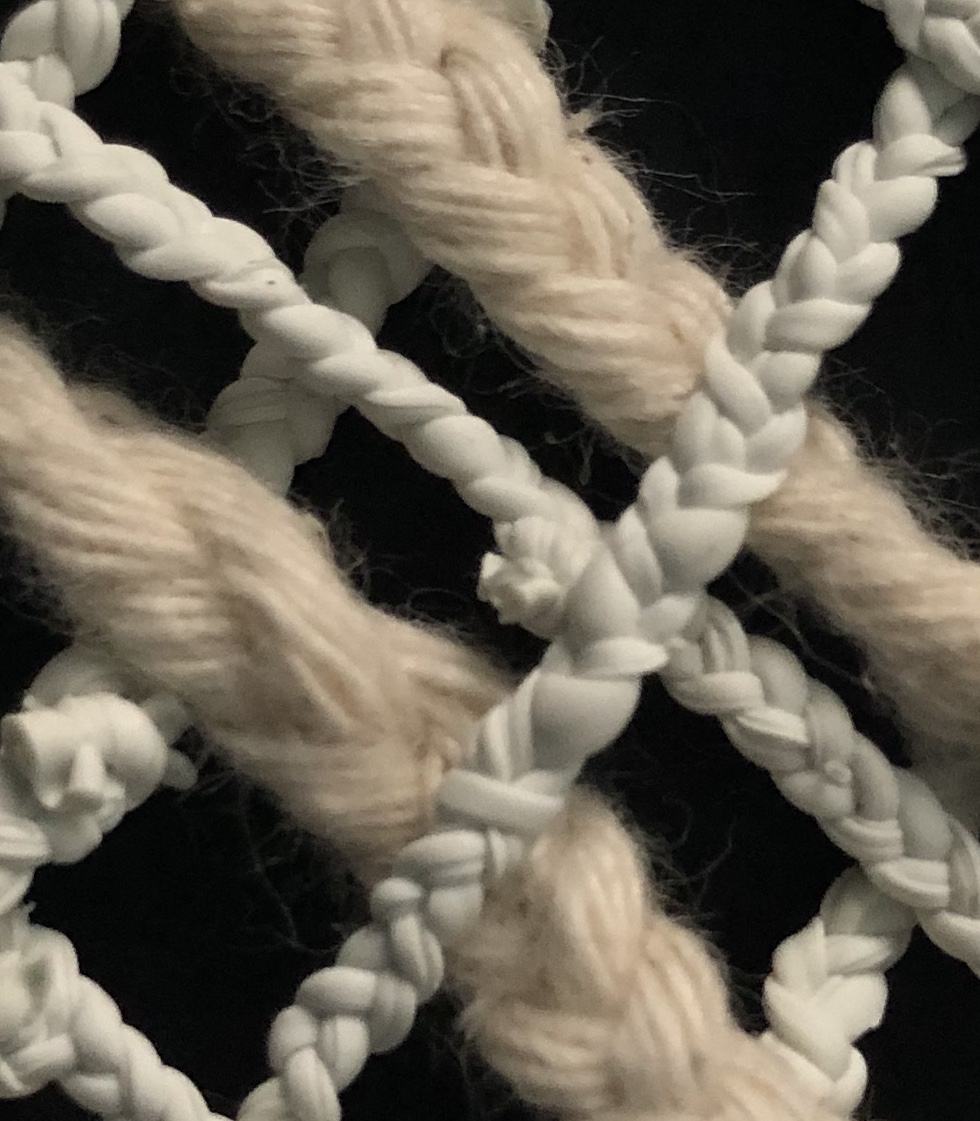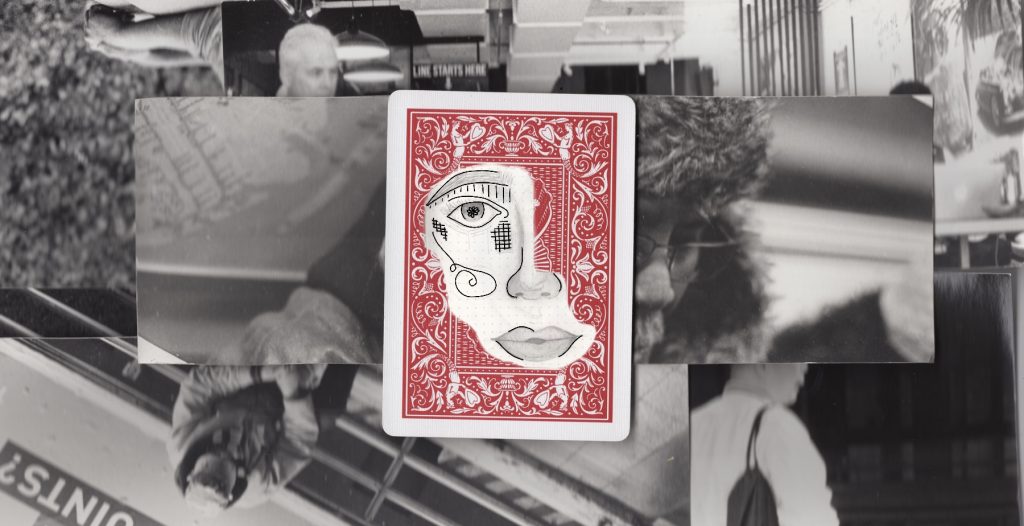
This was the first piece I created in Drawing Machines that I truly resonated with. Created from old photo strips, playing cards, and my nearly untouched sketchbook, this piece was a true frankenstein creation of materials. I remember staring at it for several minutes, after its initial birth, as I tried to distance myself from the piece and see the art that the machine had created. I began to notice the scanner’s interpretation of varying saturations in the photo strips, the texture in the white outline of the playing card, and the depth that was created by stacking the red card on a mound of black and white. I first created this piece as an assignment for Drawing Machines, but I soon discovered that it wasn’t really mine- this art belonged to the machine.
This initial realization was a difficult one for me to accept. As an artist, I thrive on precision and detail. As a viewer of art, I appreciate a wider variety of styles ranging from Monet’s Water Lilies to Dali’s The Persistence of Memory to Hilma af Klint’s The Swan. While both these roles offer different approaches to art, however, I find one commonality amongst them: both the art I love and the art I strive to make involve thoughtful decision making and straight forward experimentation.
Creating this first piece was what I perceived to be a departure from this mindset and the experience was both freeing and stress inducing. Suddenly I was at the mercy of a machine that I had never even seen before. I was forced to work with my new partner to produce a work of art, and the initial stages were filled with frustration and a few nasty words. It seemed as though the more frustrated I got, the more frustrated the machine got, and together we created a pile of steaming shit. Eventually, in a moment of desperation, I allowed the machine to do the work it desired to do and relinquished myself to it’s control using a simple set-up of test strips and playing cards. The outcome was unexpectedly beautiful. I was shocked to find that the instrument had created such a stark distinction between the colors I had placed on its surface, but had still managed to capture minute details such as the familiar texture of the playing card. Inspired by the work my scanner had created, I decided to scan my sketchbook and use a composited image from it’s pages to add my own touch and seal our partnership.
That was my first meaningful experience of using a drawing machine, and it inspired me to continue my exploration of what the scanner had to offer as a drawing machine. I later used the momentum that I gained from creating my first piece as inspiration to create these three works:
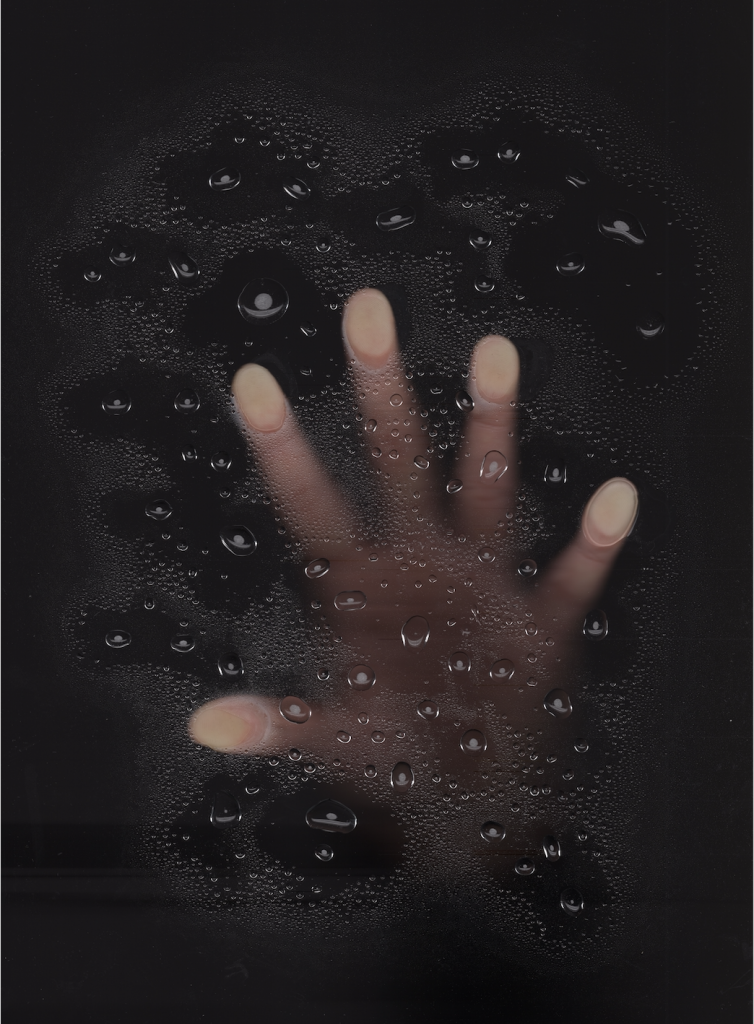

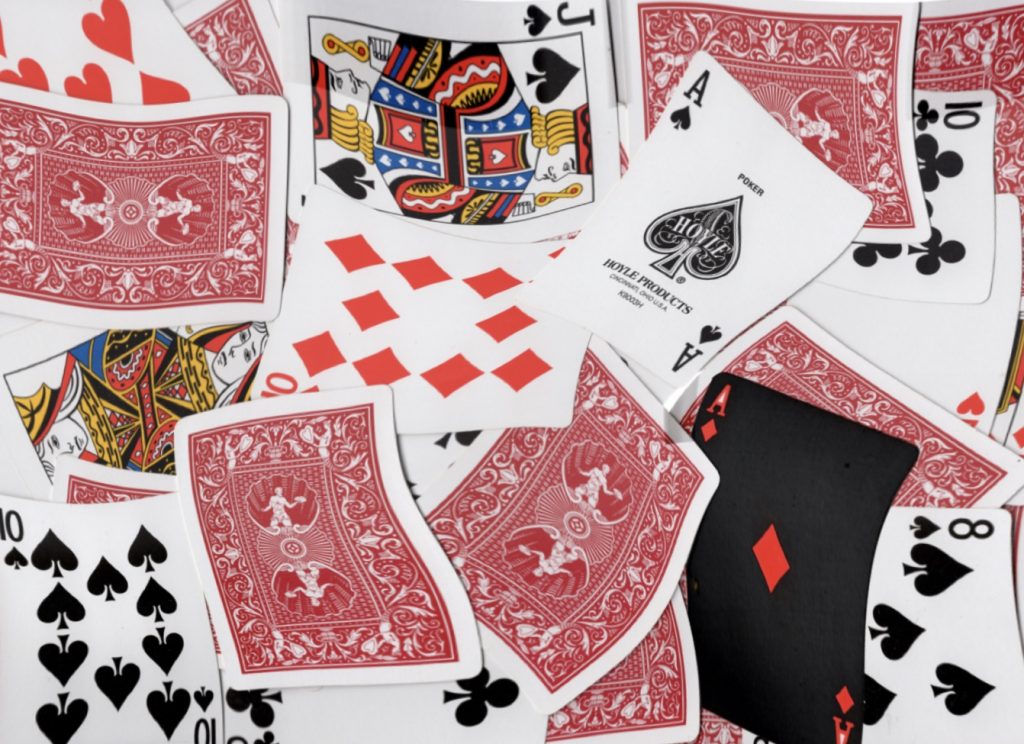
I had learned to view the machine as my partner in creating art and was no longer trying to exert total control on the machine. Instead, I used the scanner as a mirror to create a reflection of the art that I wanted to create. It wasn’t exactly what I imagined, but I was looking at my inspiration through the eyes of my machine. In it’s own way, without the precision of my control, the art we created together was beautiful. The scanner had brought meaning to my art that I could never have created by myself.
The work I have been doing for conference has yet to reach a singular moment of satisfaction, but instead, has followed its own path filled with equal frustration and pockets of inspiration. Rather than extreme lows and highs, this journey has been one of steady incline as each inspiring moment continues to fuel my excitement about the finished project. For my conference work I decided to create a harmonograph out of cardboard and other household objects. This process includes three parts: research about the mechanics of a standard harmonograph, understanding about the strengths and limitations of my chosen materials, and experimentation.
I began this process by researching Karl Sims, a computer graphics artist and researcher. I read about the mechanics of his famed three-pendulum harmonograph and studied multiple principles such as the results of height and weight variations on the drawing, different pendulums- lateral or rotary, and suspension. After reading theory, I played with cardboard to learn about it’s limitations. Serendipitously, we had an in-class workshop that offered me an opportunity to experiment with cardboard and it’s different uses. During this time I created a spirograph using three gears of different sizes.
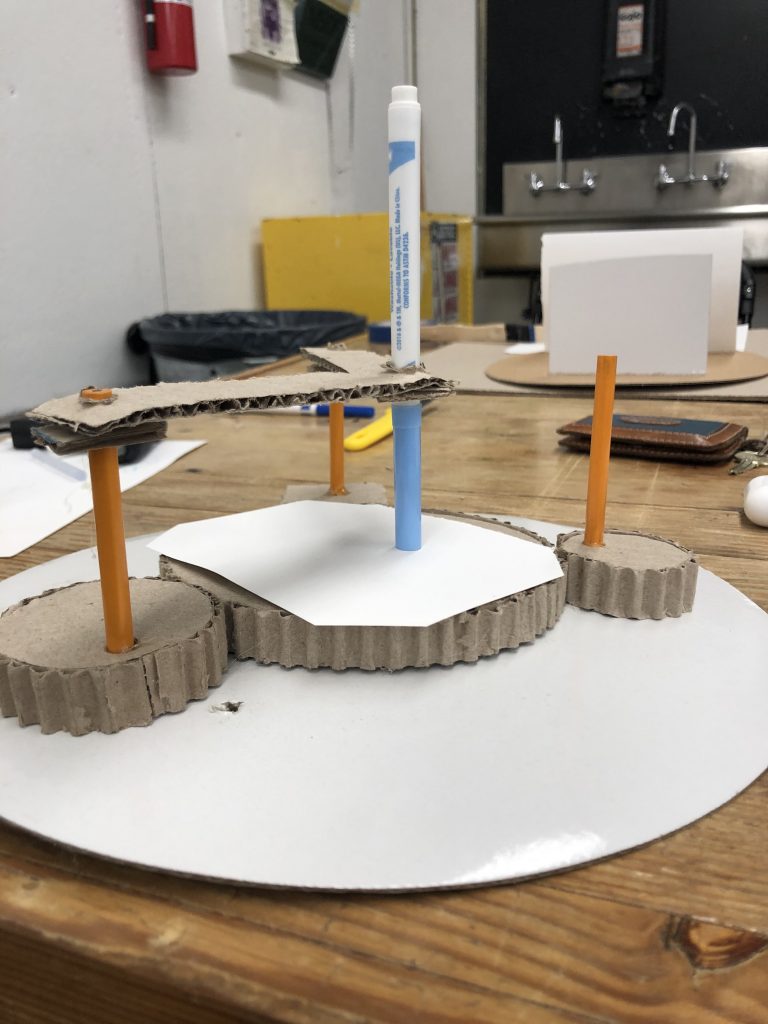
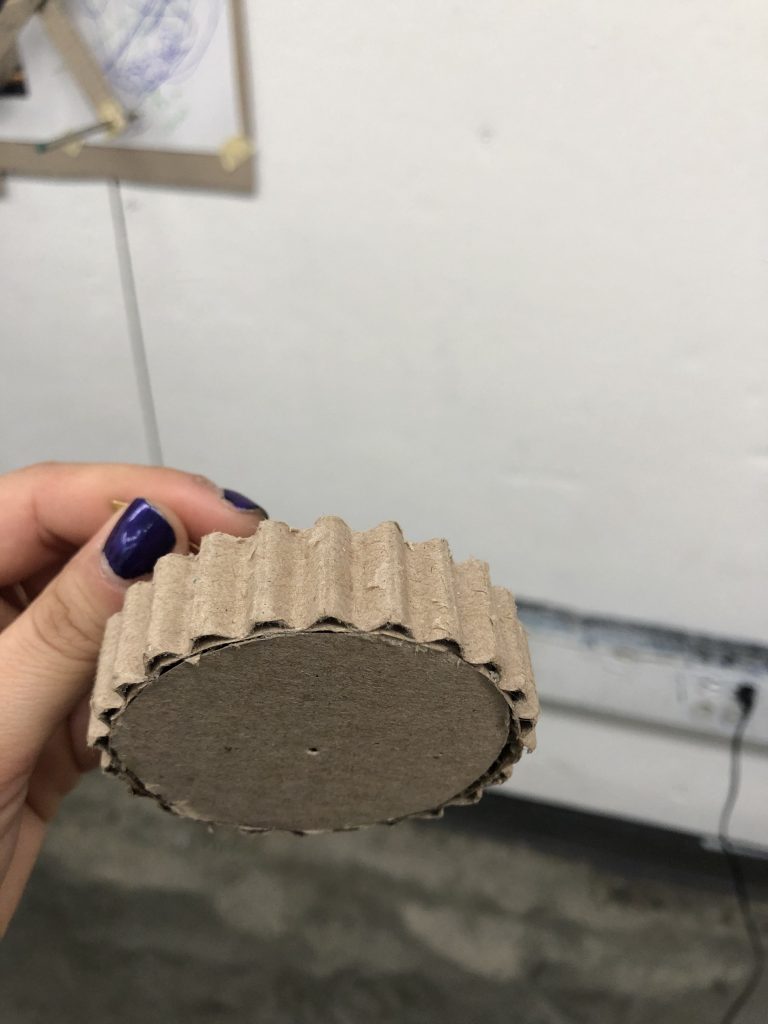
I experimented with the plasticity of cardboard and created bendable pieces that could wrap around the skeleton of a gear so that each tooth would align in the slots created by it’s sister gears. I needed the shapes to be somewhat uniform so that there was little to no obstruction in the gears path while it spun. In order to accomplish this task I had to learn how to cut the cardboard with precision and avoid ragged edges- a process that took me about 5 hours to do adequately. The result was spinning gears made out of cardboard and a better understanding of my materials. I learned to go with or against the grain of the cardboard to produce certain pieces and allowed the material to bend the way it wanted instead of forcing it in one direction or the other. This primary research and experimentation led me to make informed decisions about how to best construct my first harmonograph.
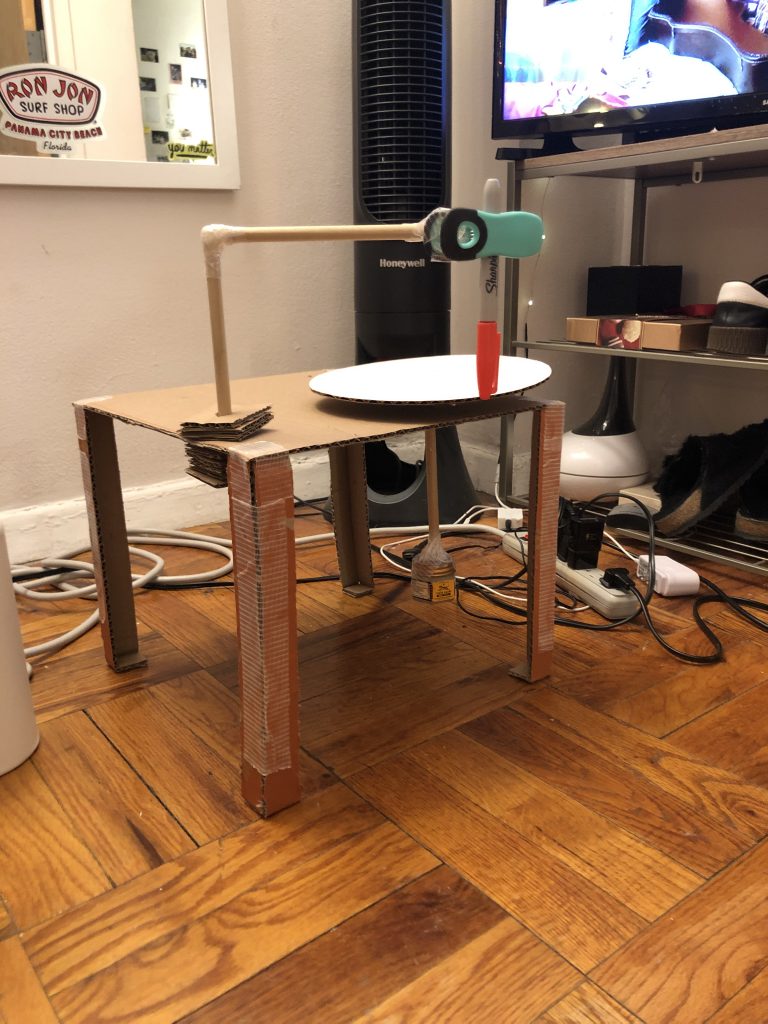
My first draft, once again, brought endless frustration. Although I was better informed than I would have otherwise been, I was still somewhat in the dark about how to actually make the machine create the beautiful spirals I had seen during my research. I enjoyed the mechanical process of building each piece, but was ultimately disappointed by the machine I had built. Dissimilar to my classroom experiments, this machine was not already built. Although the process is currently filled with exasperation and irritation, I am excited to see what kind of art my final draft will create. Hopefully, it will truly fulfill the role of a “drawing machine”.
